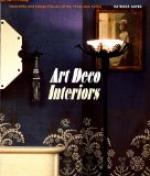If you have absolutely no interest in the arranging or rearranging of your rooms, house or houses, of course, leave it to a decorator and give your attention to whatever does interest you. On the other hand, as with bridge, if you really want to play the game, you can learn it. The first rule is to determine the actual use to which you intend putting the room. Is it to be a bedroom merely, or a combination of bedroom and boudoir? Is it to be a formal reception-room, or a living-room? Is it to be a family library, or a man’s study? If it is a small flat, do you aim at absolute comfort, artistically achieved, or do you aim at formality at the expense of comfort?
If you lean toward both comfort and formality, and own a country house and a city abode, there will be no difficulty in solving the problem. Formality may be left to the town house or flat, while during week-ends, holidays and summers you can revel in supreme comfort.
Every man or woman is capable of creating comfort. It is a question of those deep chairs with wide seats and backs, soft springs, thick, downy cushions, of tables and bookcases conveniently placed, lights where you want them, beds to the individual taste,—double, single, or twins!
The getting together of a period room, one period or periods in combination, is difficult, especially if you are entirely ignorant of the subject. However, here is your cue. Let us suppose you need, or want, a desk—an antique desk. Go about from one dealer to the other until you find the very piece you have dreamed of; one that gives pleasure to you, as well as to the dealer. Then take an experienced friend to look at it. If you have every reason to suppose that the desk is genuine, buy it. Next, read up on the furniture of the particular period to which your desk belongs, in as serious a manner as you do when you buy a prize dog at the show. Now you have made an intelligent beginning as a collector. Reading informs you, but you must buy old furniture to be educated on that subject. Be eternally on the lookout; the really good pieces, veritable antiques, are rare; most of them are in museums, in private collections or in the hands of the most expensive dealers. I refer to those unique pieces, many of them signed by the maker and in perfect condition because during all their existence they have been jealously preserved, often by the very family and in the very house for which they were made. Our chances for picking up antiques are reduced to pieces which on account of reversed circumstances have been turned out of house and home, and, as with human wanderers, much jolting about has told upon them. Most of these are fortified in various directions, but they are treasures all the same, and have a beauty value in line colour and workmanship and a wonderful fitness for the purposes for which they were intended.
“Surely we are many men of many minds!”




